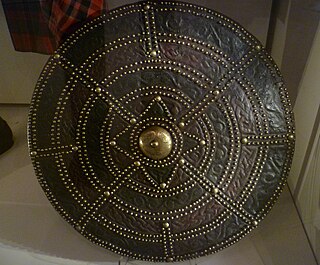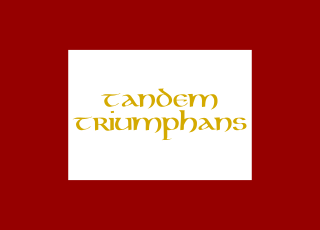
Charles Edward Louis John Sylvester Maria Casimir Stuart was the elder son of James Francis Edward Stuart, grandson of James II and VII, and the Stuart claimant to the thrones of Great Britain and Ireland after 1766 as Charles III. During his lifetime, he was also known as "the Young Pretender" and "the Young Chevalier"; in popular memory, he is known as Bonnie Prince Charlie. Born in Rome, he spent much of his life in Italy. He is best remembered for his role in the 1745 rising; his defeat at Culloden in April 1746 effectively ended the Stuart cause, and subsequent attempts failed to materialise, such as a planned French invasion in 1759. His escape from Scotland after the uprising led to his portrayal as a romantic figure of heroic failure.

The Battle of Culloden was the final confrontation of the Jacobite rising of 1745. On 16 April 1746, the Jacobite army of Charles Edward Stuart was decisively defeated by a British government force under Prince William Augustus, Duke of Cumberland, on Drummossie Moor near Inverness in the Scottish Highlands. It was the last pitched battle fought on British soil.

Earl of Perth is a title in the Peerage of Scotland. It was created in 1605 for James Drummond, 4th Lord Drummond. The Drummond family claim descent from Maurice, son of George, a younger son of King Andrew I of Hungary. Maurice arrived in Scotland on the ship which brought Edgar Ætheling, the Saxon claimant to the crown of England after the Norman Conquest, and his sister Margaret to Scotland in 1068. Maurice was given lands in Lennox (Dunbartonshire), together with the hereditary stewardship of the county. The Hungarian Prince theory has been discounted as no evidence of any relationships exists in written records or DNA. "The Red Book of the Menteiths" clearly discounts the Hungarian Prince as a myth likely formed to give status to the Drummond origins. The Drummonds in the 12th Century were allied to the Menteiths – their early fortunes developed through the relationship. Indeed, one "Johannes De Drumon", said to have died in 1301, was buried in Inchmahome Priory which was founded by the Menteiths. His successor John Drummond, the 7th Steward, was deprived of the lands and retired into Perthshire.

Glenfinnan is a hamlet in Lochaber area of the Highlands of Scotland. In 1745 the Jacobite rising began here when Prince Charles Edward Stuart raised his standard on the shores of Loch Shiel. Seventy years later, the 18 m (60 ft) Glenfinnan Monument, at the head of the loch, was erected to commemorate the historic event.

Blair Castle stands in its grounds near the village of Blair Atholl in Perthshire in Scotland. It is the ancestral home of the Clan Murray, and was historically the seat of their chief, the Duke of Atholl, though the current (12th) Duke, Bruce Murray, lives in South Africa. The castle stands in Glen Garry, and commands a strategic position on the main route through the central Scottish Highlands.

Targe was a general word for shield in late Old English. Its diminutive, target, came to mean an object to be aimed at in the 18th century.

The treasure of Loch Arkaig, sometimes known as the Jacobite gold, was a large amount of specie provided by Spain to finance the Jacobite rising in Scotland in 1745, and rumoured still to be hidden at Loch Arkaig in Lochaber.

Bonnie Prince Charlie is a 1948 British historical film directed by Anthony Kimmins for London Films depicting the 1745 Jacobite Rebellion and the role of Bonnie Prince Charlie within it. Filmed in Technicolor, it stars David Niven, Jack Hawkins, and Margaret Leighton.

The Jacobite rising of 1745, also known as the Forty-five Rebellion or simply the '45, was an attempt by Charles Edward Stuart to regain the British throne for his father, James Francis Edward Stuart. It took place during the War of the Austrian Succession, when the bulk of the British Army was fighting in mainland Europe, and proved to be the last in a series of revolts that began in 1689, with major outbreaks in 1708, 1715 and 1719.
Ewen MacPherson of Cluny, also known as "Cluny Macpherson", was the Chief of Clan MacPherson during the Jacobite Rising of 1745. He took part as a leading supporter of Prince Charles Edward Stuart. After the rebellion was crushed, he went into hiding and eventually escaped to France. He was the uncle of poet James Macpherson, who collected, translated, and adapted the epic poem Ossian, based upon the Fenian Cycle of Celtic mythology.
Charles Edward Augustus Maximilian Stuart, Baron Korff, Count Roehenstart was the natural son of Prince Ferdinand of Rohan (1738–1813), Roman Catholic Archbishop of Cambrai, by Charlotte Stuart, Duchess of Albany, herself the natural daughter of Charles Edward Stuart, the "Young Pretender". She was legitimated after the birth of her children, and Roehenstart was later a passive Jacobite pretender to the British throne.

The West Highland Museum tells the story of the Scottish Highlands and the Islands. It aims to cover every aspect of West Highland history, including that of Fort William, where it is located in a listed building in the centre of the town. It also hosts other exhibits for archaeology and wildlife. The museum, which has always been independent, is a member of Museums Galleries Scotland.

James Drummond, 6th Earl and 3rd titular Duke of Perth was a Scottish landowner best known for his participation in the Jacobite rising of 1745, during which Charles Edward Stuart attempted to regain the British throne for the House of Stuart.

The siege of Inverness took place in February 1746 and was part of the Jacobite rising of 1745.

Cosmo Alexander was a Scottish portrait painter. A supporter of James Edward Stuart's claim to the English and Scottish thrones, Alexander spent much of his life overseas following the defeat of the Jacobite cause in 1745.

Bendor Gerard Robert Grosvenor is a British art historian, writer and former art dealer. He is known for discovering a number of important lost artworks by Old Master artists, including Sir Peter Paul Rubens, Claude Lorrain and Peter Brueghel the Younger. As a dealer he specialised in Old Masters, with a particular interest in Anthony van Dyck.

The "lost portrait" of Charles Edward Stuart is a portrait, painted in late autumn 1745 by Scottish artist Allan Ramsay, of Charles Edward Stuart, also known as the Young Pretender or Bonnie Prince Charlie.

The Atholl raids of 14 - 17 March 1746 were a series of raids carried out by Jacobite rebels against the British-Hanoverian Government during the Jacobite rising of 1745.

The Jacobite Army, sometimes referred to as the Highland Army, was the military force assembled by Charles Edward Stuart and his Jacobite supporters during the 1745 Rising that attempted to restore the House of Stuart to the British throne.

An Incident in the Rebellion of 1745 is an oil painting, by the Anglo-Swiss artist David Morier (c.1705–1770). It is part of the art collection of the British royal family. It depicts a scene during the 1746 Battle of Culloden, in which a group of Jacobite Scottish Highland soldiers charge a group of soldiers of the government army of Great Britain.















